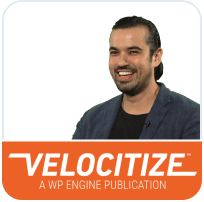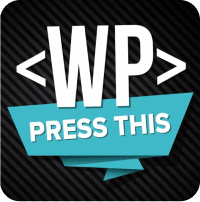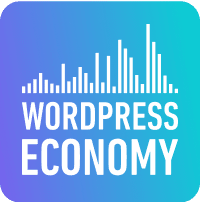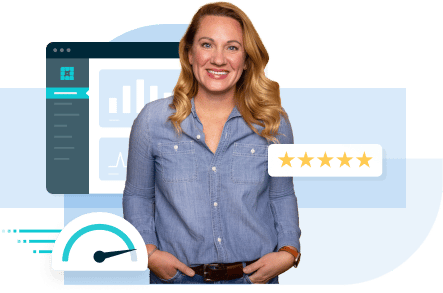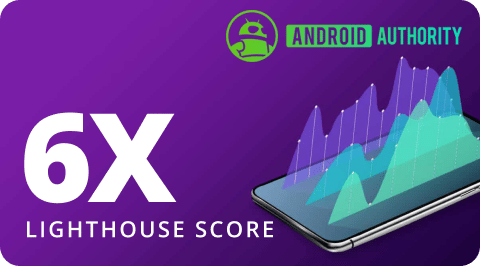Brand Breakout Summit/2021: Why Android Authority Is Betting On Headless To Captivate Global Audiences
Android Authority, the largest independent publication dedicated to the world’s most widely used operating system, adopted a headless architecture to radically improve scale, site performance, and increase ad revenue without diminishing the publisher experience.
Learn from Head of Product at Android Authority, Tayo Onabule, about why his team chose Atlas, WP Engine’s complete Headless WordPress Hosting platform, and the role Luna London played in implementing the project. The session below, moderated by WP Engine Product Director Annan Patel, provides a closer look at the improvements to site performance and internal workflows Android Authority has achieved, as well as lessons learned for other companies considering a headless approach.
Annan Patel, Product Director, WP Engine, and Tayo Onabule, Head of Product, Android Authority discuss:
- How Android Authority leveraged Atlas, WP Engine’s Headless WordPress Platform, for their site.
- Lessons learned by integrating headless architecture for enterprise organizations.
“Everyone on the team fully agrees that Atlas is blazing fast and way more responsive than anything we’ve had in the past…For anyone who’s used to the way WordPress works, once you get a headless site up and running and you’re navigating around and feeling the difference, there’s not much to complain about realistically. It’s quite thrilling for the guys to see that kind of speed on our site.”
Tayo Onabule, Head of Product, Android Authority
Full session transcript
ANNAN PATEL: Welcome to our session. Thanks for joining. My name is Annan Patel, I’m the Director of Product Management here at WP Engine. And I’m honored to be joined today by Tayo Onabule, who is the co-founder of Luna London.
And we’re going to talk a little bit about their client, Android Authority, and their journey to Headless WordPress.
Tayo, thanks for joining us today.
TAYO ONABULE: Thanks so much for having me. Cheers.
ANNAN PATEL: Great. Well, hey, I guess, just to kick things off, help set the scene for us. Can you provide a little bit of background on Android Authority and Luna London.
TAYO ONABULE: We’ve had quite a long relationship. We’ve been working together for around five-ish years now. In some capacity, at first, I kind of took up a graphic design that had a product role. And then the last couple of years, Luna London has formed me and her colleague. And we’ve taken over that whole sort of development and design process from start to finish.
And the goal has always been to become a leader in the segment, and really push the boat in terms of technology and development, and user experience as well.
ANNAN PATEL: I’m biased, but I think you all have done a fantastic job. And I mean, we’ve obviously been working together for a while, so we’ve seen a lot of the great innovation that’s happened on androidauthority.com.
Before we dig in further, can you give us a few stats about Android Authority? Can you tell us a little bit about their business, kind of any stats you give us on traffic?
TAYO ONABULE: Yeah. They’re on the larger side of the sites. They’re pulling around anywhere from 15 to 20 million monthly users, and that’s kind of been in the quiet periods of the year.
And they’ve really been going a while. They’re around 10 years old, and really got some history behind them in terms of user cloud. They’re really trusted, and a very loyal following. And one of the highest social engagements as well, of any tech site.
So, they’re quite a lot to try and do justice to, especially when you’re refreshing such a large and important site.
ANNAN PATEL: Definitely. There’s much great informations on there, and how often the site’s updated. I can imagine. Definitely a scaling issue to keep in mind.
And I guess, with that in mind, just to kind of get to the topic at hand, can you talk to us a little about that journey to Headless, and what were the primary business drivers that influenced the shift?
TAYO ONABULE: As I mentioned, it’s been a real journey for them already. And much of that is dictated by Google and the guidelines that they put down in terms of speed, in terms of page experience, in terms of user journeys and interaction.
So, that has been a big spur for us over the years in terms of what we do next and what steps we take to try and bring more success to the business.
And so, a couple of years back, I was doing some research on possibilities as a way to refresh the site. And I settled on, somehow or another, Headless as being a good option for us.
And from that point onwards, it was a case of us convincing the team and some of the key stakeholders that it was the way to go, as well as finding the way to actually do Headless in a world, at that point, where there wasn’t a ton of attention on it yet, and not a ton of experienced companies to go to.
And so, luckily it all worked out and we’re here now. And we’ve got a great team of developers working on it. And of course, the support from WP Engine and the Atlas team. So, I think it’s pretty safe to say at this point that it’s been a success.
ANNAN PATEL: That’s great. Yeah, it’s been a fantastic transformation to work with you all on, and see over the last several months. Before we dig into that though, you mentioned having to align your stakeholders around this decision.
Can you talk just a little about who were those key stakeholders, who did you need to work with in making this decision or coming up with this consideration? Were there any special considerations that you had to take into account for the stakeholders?
TAYO ONABULE: So, it’s been– It’s an interesting one with Android Authority, because they’re such a diverse business in terms of what they do and the range of topics that they cover. So, as it may be obvious to say, is a lot of different parts of the business depend on the website in different ways for a number of functions.
So, that means that, yes, we’ve got the founders of Android Authority to look at in terms of key stakeholders, but we’ve also got to look at the sales team, and the deals team, and the writing team, and the latest news, and everything else that ties in, as well as newsletters, push notifications, and so on.
So, getting approval and– Not just getting approval, but making sure that whatever we propose as an agency was enough to satisfy their needs, really took pleasing a number of stakeholders and making sure that we could cover all of those requirements, basically.
ANNAN PATEL: Yeah, I can imagine. Definitely such a large publishing site must have so many contributors and certainly business stakeholders to consider when making that decision.
Sort of in that buying process and that journey, what decision criteria did Android Authority and Luna London use when assessing the different Headless options? Were there any specific requirements that you considered from whether it’s your content publisher’s standpoint, or your developer standpoint?
TAYO ONABULE: I think that the key metrics by which we measured the viability of a solution at the time was, one, speed, the end speed of the product, like what we’re going to get at the final product.
And two, the ease of development going forward. We didn’t really mind too much if there was a big startup cost in terms of money or time. Just because that comes when you have a site that large. But making sure that we were more flexible in the future. It’s been quite tough in my role as head of product before, or now as the agency to get requests for a new feature and so on, and not be able to service those requests in a timely manner.
So, being able to move swiftly from now on, being able to do stuff that’s a little bit more flexible, basically, in terms of design and the way it’s put together, these are some of the key deciding factors. And naturally, Headless really answers all of those.
Being able to build a site in React that essentially renders about as pure of an HTML page is possible on a launch site is really a big deal for us, and is going to allow us to do a lot more going forward.
ANNAN PATEL: Absolutely. You mentioned that you built the site in React. Was there a particular reason you chose React over some of the other frameworks? And you can tell some of the benefits of React so far.
TAYO ONABULE: We went with React– It’s nothing fancy, basically. It’s just a really highly supported framework. Already we’ve been really lucky as an agency to build a team of developers who are capable and confident working on it, but it’s also– It brings the same level of popularity and support as WordPress does to CMS’s, as React does to JavaScript library.
So, it was kind of the obvious choice in terms of just making sure that we keep that flexibility going forward. It’s also always supported, and that’s something that’s really important for a site with high loads like us
ANNAN PATEL: Yeah, absolutely. Especially a site that, I imagine, gets a lot of mobile traffic, web traffic. Just that flexibility that that kind of front-end can provide is a great user experience– It provides for a great user experience.
Was there any kind of learning curve for your team building a Headless WordPress site? I know they’ve got experience with traditional WordPress, but what were some of those differences? What were any challenges that they had to overcome?
TAYO ONABULE: I mean, I think one of the main challenges with Headless overall, or at least from my experience of it, is actually the lack of documentation and support that there is out in the world.
And obviously, as you’ll know, Annan, we started this around the same time where you guys were starting the Atlas project. And it’s great that now there is a really good amount of information that you guys provide as part of Atlas on how to set this up. But I think that was one of the main kind of stoppers, is finding out how to do it and how to communicate that to a team.
For example, when we first started with our current development team, our development manager, who’s had a lot of experience in a number of companies, it took him a good week or so to fully– For it to click into his head quite what Headless was. Surely because there’s not many examples of it and there’s not many good resources to point people to, basically.
ANNAN PATEL: Yeah, definitely. Something we hear a lot is for that need for thought leadership, best practices, and just sort of how to mitigate the space. How is your team able to overcome that? How were you able to learn while also building?
TAYO ONABULE: Yeah. I mean, no special sauce or anything. It’s just they’ve been a really dedicated team. It’s kind of what I think about every day and go to sleep thinking about. I’m always researching things, and I’ll always push articles and content over to the team just so that they can brush up on it as well.
Unfortunately, being an early adopter of the technology means that you have to be on the front lines, finding it out for yourself. But it is getting to the point now where there’s more resources on it, there’s more videos on it, there’s more documentation on it.
And the creation of things like Next JS. And even pre-built Headless solutions like Frontify for WordPress is making it getting to the point where it is a possibility, and at least there is some jumping in point now, where there didn’t used to be back in the day.
ANNAN PATEL: Sure, absolutely. Can you tell us a little bit about why you chose to go Headless WordPress over using one of the other Headless native CMS’s that are out there. Why WordPress for Headless?
TAYO ONABULE: Well, I think– I don’t think I’d have too many arguments if I tried to say WordPress is one of the most well put together CMS’s. It’s extremely–
ANNAN PATEL: Definitely no arguments from here.
TAYO ONABULE: Exactly. And you can do a lot with it. And so it would be really difficult to rip a team that’s used to WordPress, to rip them away from WordPress and put them in some– I won’t say less than CMS but definitely–
ANNAN PATEL: You can say less than CMS. It’s fine.
TAYO ONABULE: Yeah, we’re all supporters here. It would be really difficult to rip the team away from it. And so, it makes perfect sense for us because then we get the best of both worlds. It scratches my designer, development itch of having a fast and pretty site. And at the same time, it doesn’t leave any important features out for our writers and senior editor. It kind of keeps everyone happy, basically.
ANNAN PATEL: Yeah, definitely. We hear that sentiment a lot. We know so many content teams, marketing teams have effectively grown up on WordPress over the last 20 some odd years. So, making that transition to a lesser CMS in the sense of there’s not all of that thought leadership that’s 20 years old baked in. So, it totally makes sense.
Of course, I think our audience knows that when you make that transition from traditional WordPress to Headless WordPress, you are giving up a few things. There are some things in traditional WordPress that make WordPress so flexible and so easy to use that are not intuitive or flexible to show on any device and don’t come with Headless. Can you talk to us a little bit about some of those trade-offs that you had to make, especially around flexibility with layouts, and the ability to see plugins to get quick functionality.
TAYO ONABULE: It is a good point. And I think it’s safe to say that Headless isn’t going to be for everyone. If you don’t have at least some access to custom development, it’s going to be a difficult ask. But I think if you are able to get a team together, then these things are– You’re able to overcome them some way.
And I think, for us, the key things that were kind of sticking points in the transition were post previews were one of them. There’s some difficulty having sort of instantaneous post previews on drafts and articles before publishing.
And as you mentioned, the slight lack of flexibility in terms of using plugins on the site, and layout, and custom layout, and things controlled and augmented by WordPress features.
So, that is one thing to consider. But at the same time, I’ve been continually surprised at how much you are able to support through Headless. If there’s a plugin that you really want to use, most likely you can get a JSON output for it and incorporate it into your front-end.
So, these problems are surpassable, they just sort of add a little bit of time onto development, depending on the specific thing.
ANNAN PATEL: Sure. Absolutely. Since making this shift though, have you gotten any feedback from your content teams, or any of your other stakeholders about, hey, we really love this about this. Or, hey, yeah, I know there’s these benefits, but it would be really great if I could do this again. I’m curious if those conversations come up.
TAYO ONABULE: So, I’d say we’ve had two kinds of feedback. The one feedback– The one bad sort of feedback that we’ve had is just a delay between hitting Publish and seeing the changes on live. And that was resolved just a week later.
And then, basically, everyone in the team fully agrees that it’s blazing fast and way, way more responsive than anything we’ve had in the past. And that’s been the overwhelming majority of it.
For anyone who’s used to the way WordPress works, once you get a Headless site up and running, and you’re navigating around and sort of feeling the difference, there’s not much to complain about realistically. It’s quite thrilling for the guys to see that kind of speed on our site finally.
ANNAN PATEL: Yeah, absolutely. If you haven’t checked out androidauthority.com, by the way, quick plug, you should definitely check it out. It’s lightning-fast, and has lots of great content.
You mentioned– You sort of went down this road, so I guess we’ll just get down to it. Are there any early results you can share? What goals going in did the team have? Maybe KPIs even, metrics. And what kind of shift have you seen? What kind of, hopefully, improvements have you seen?
TAYO ONABULE: I mean, it’s been at the very least positive, if not very positive. We saw anywhere from a two to six times improvement in terms of page speed insights, which is a really big deal for us. Around a 25% improvement in page speed in Google Analytics.
We now pass every Core Web Vitals test in Search Console across mobile and desktop. Everything is getting a good measurement. So, it’s been really successful from that point of view.
In terms of revenue, it’s a little early to say. We only got launched about a month ago now. So it’s a little early to say on that. But at the very least, it’s stayed steady with a very small increase. But we’ll have to see over time as people respond to that.
But I think the main thing for us has just been that, firstly, those Core Web Vital tests that I mentioned. To be passing those with flying colors is very positive for us. As I mentioned earlier, we rely on Google’s favor for [INTERPOSING VOICES]
So, that being in that state, especially as they introduce more page experience updates, was a really big deal. And as an agency, we’re really happy that we could have provided that for Android Authority.
ANNAN PATEL: Yeah. We’re all– It’s always good when you can kind of feed the Google beast sometimes, as so much of– Not only, obviously, search engine results, but so much of being a ranking higher is having that really great experience, having that really fast site (on any device) that users are staying on and continue to engage with. So, that’s fantastic to hear.
I only have a few questions left. Do you have any recommendations or lessons learned for companies that are pursuing Headless?
TAYO ONABULE: I would say– That’s a good question. I mean, I think the first thing I would say is try and find a team who will take care of you. Because we started out with a few different developers. And then, luckily, as an agency, we able to hire inside ourselves and build our own team, at which point things really picked up and got a lot easier.
This is a bit of a new world of web development that we’re getting into. So, you need developers who are really willing to be on the front edge and willing to stretch themselves in terms of their capabilities.
I would say getting a good team is the first thing. And secondly, to treat it as something fresh. Because you don’t need to be constrained anymore by the constraints of normal WordPress.
You can do things in a lot of different ways now. It gives you a lot of flexibility in terms of what JavaScript libraries you might use to sort of augment the site’s existing features. It gives you a lot of flexibility in the kind of page experiences you’re able to provide.
And to make sure that you make use of all of those options now. Because it’s a whole new world that we’re going into here.
ANNAN PATEL: Yeah, absolutely. A lot of our audience today, I would imagine, are traditional WordPress developers, building traditional WordPress sites. For those WordPress developers that are really considering shifting into Headless WordPress, or transitioning some of their sites to Headless WordPress. Any specific advice for making that decision, or I guess somewhat lessons learned, any mistakes that they might avoid or best practices they could pick up?
TAYO ONABULE: I would say– I think, honestly, the main thing is use– If you’ve got the ability to hire a front-end developer basically, and let them focus on it, I would say do that. It’s one of the really wonderful things that’s happened as a result of going Headless, is there are WordPress guys who are really capable in WordPress and now are able to focus all of their time in WordPress.
And equally, our front-end guys who have a lot less knowledge of the back-end are able to turn the front end into their own little playground and really go for it.
But at the same time, there’s nothing inherently all that crazy about Headless. Once you get your head around it, it’s totally doable, I think, for most capable developers and development teams.
It’s really just the case of freeing your mind from the WordPress constraints, and then going crazy and doing something really cool, really.
ANNAN PATEL: That’s fantastic. Thanks for that great advice. Just to wrap things up. I’ve got to ask, what’s next for Luna London and Android Authority?
TAYO ONABULE: So, as Luna London, we’re now getting to the point where we’ve wrapped up. This is a really big project. In terms of our relationship with Android Authority, we’ll be trying to pull this same technology across a number of other sites, as well with some really exciting projects that we’re doing that once again will be built off a similar ethos.
And then, of course, we’ll be using the same development team that we built with a number of other clients. And trying to provide the same experience that we’ve been able to bring for Android Authority to a range of other companies now.
And I think this has been– As a young agency, this has been a really great project for us to build a capable team for. And I think we’re really excited to see what other projects we can pull off and really push the boat in that sense.
ANNAN PATEL: Yeah, absolutely. I’m excited too, to see what else your team comes up with. Great job with Android Authority. And really appreciate your insight and your time today, Tayo. Thank you, again.
And to our audience, thanks for joining us. Please stay tuned for more from our WP Engine Summit 2021. And we’ll see you soon.
TAYO ONABULE: Thanks. Cheers.
LISA BOX: Thank you for attending WP Engine’s Summit/2021 I thought it was amazing to hear from our keynote speakers. And the technology discussions were informative and educational. This is really going to showcase how we’re going to grow in the future, our businesses, our technology, and the WordPress community.
And don’t forget, all of the sessions were recorded, so you’re going to be able to watch them later. But the fun is not over just yet. Feel free to continue to blow up the chat, talk to our sponsors. And then don’t forget this afternoon, the magic show with the Digital Deception team. It is amazing what they can do virtually.
Don’t forget to fill out the post-event survey. We really want to hear from you. How we can make it different, better, or what you’d like to see, and what you liked about the conference.
And also, one last shout out to our sponsors. Thank you for attending and supporting this wonderful conference. I can’t wait to see all of you guys next year. Thank you for attending, for making us part of your day, for taking the time to figure out how we can grow, all together.
We will see you next year at the next WP Engine Summit.





